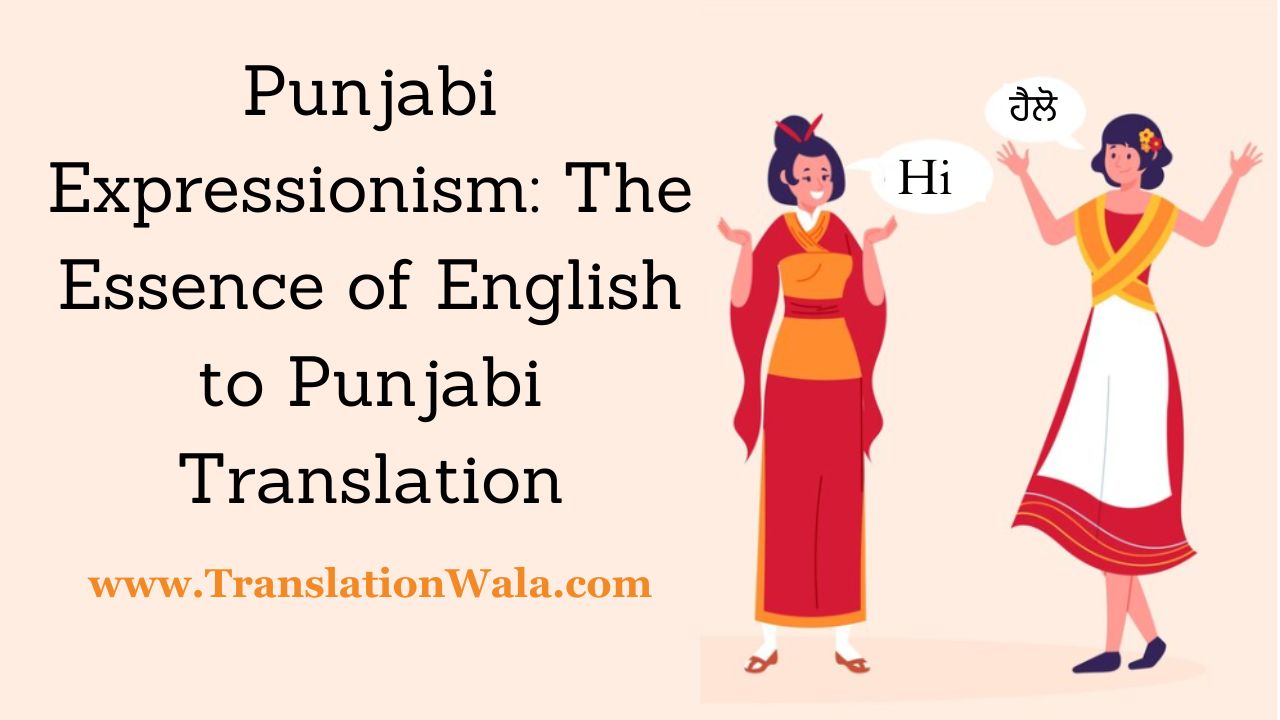When it comes to translating literature, the link between English and Punjabi is one of the most difficult ones. Punjabi is a language with a lot of cultural details and a lively oral heritage. It needs a English to Punjabi Translation method that goes beyond just matching words semantically. We call the process of catching the spirit of an English text in Punjabi “Punjabi Expressionism.”
The Power of Punjabi
Punjabi is great for expressing feelings and thoughts because it has beautiful melodies and a huge library of folk expressions. In contrast to English, which tends to value clarity and brevity, Punjabi loves using metaphors and fancy language. There are a lot of proverbs, metaphors, and informal phrases in Punjabi writing and speech.
Take the simple act of explaining rain as an example. “It’s raining” is enough in English. But the phrase “Ghata chadhian ne ambar ru aan lageya” (The clouds gather and the sky starts to cry) might help you picture whats going on. This vivid language doesn’t just describe; it adds feeling to the weather report.
The Art of Punjabi Expressionism
It is the art of turning into Punjabi that catches this emotional core. There is no word-for-word replacement; instead, the expression of Punjabi is used to weave an artistic fabric. The person who English to Punjabi Translation is like an artist because they use words to bring back the feelings, cultural references, and physical details that are in the English text.
Finding the Punjabi Equivalent
A complex method is needed to reach Punjabi Expressionism. Here are some important plans:
- Equivalence in Effect, Not Form: Focus on giving the Punjabi reader the same effect that you want them to have from reading the English text. If an English metaphor makes you feel alone, you can find a Punjabi saying or phrase that makes you feel the same way.
- Embrace the Nuance: There are many small ways that words can mean different things based on the situation. To pick the best word or phrase, a translation needs to be aware of these subtleties.
- Mining the Rich Vein of Punjabi Literature: Some of the most powerful words can be found in Sufi poems and modern novels written in Punjabi. These sites can give translators ideas for how to improve their work.
- Understanding Cultural Context: Some English jokes or references might not work the same way in Punjabi. To find a similar word that people in Punjabi can understand, the translator needs to know about the cultural background of both languages.
Challenges and Considerations
Punjabi Expressionism is not without its challenges. The vast vocabulary gap between the two languages can make finding the perfect Punjabi equivalent a hurdle. Additionally, staying true to the original text’s style and register while maintaining Punjabi’s natural flow requires a skilled translator.
Also Read: Transcending Tongues: A Journey into English to Telugu Translation
Benefits of Punjabi Expressionism
There are many good things about Punjabi Expressionism. Because of this, Punjabi readers can enjoy the beauty and depth of English writing in a way that fits with their culture. It also makes you appreciate the creative power of the Punjabi language even more.
Examples of Punjabi Expressionism in Action
Let’s use a simple example to show what Punjabi Expressionism is. In Punjabi, the line “The house was silent” would sound like this. It could be translated as “Ghar chup tha” (The house was quiet). In Punjabi, however, the more descriptive “Ghar sunsaan si pya gaya” (The house had fallen into a deep silence) might be chosen because it better captures the weight of the silence.
A Call for Punjabi Expressionist Translators
As Punjabi writing grows, it becomes even more important to have Punjabi Expressionist interpreters. The people who can translate between English and Punjabi and love the creative power of the latter are the ones who bring the two cultures together. Their work makes sure that the complexity of English literature can be heard clearly in Punjabi literature.
Conclusion
Punjabi Expressionism is not just a way of English to Punjabi Translation, it’s also a way of thinking about the language that praises its beauty and power. By using this method, translators can make works that are more than just words on a page; they can turn words into colorful patterns that connect countries and spark people’s ideas.
